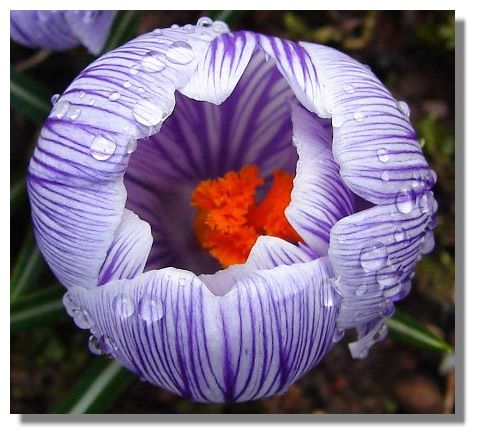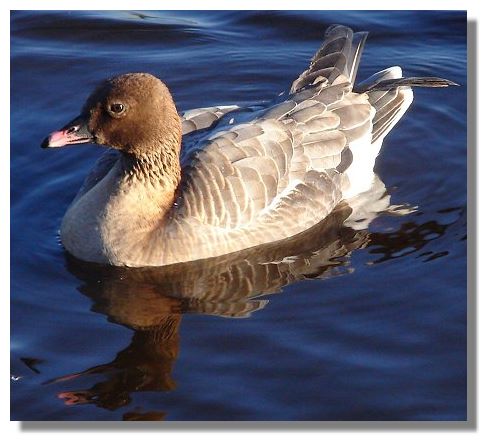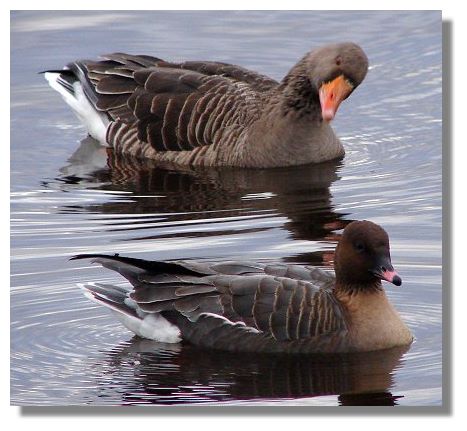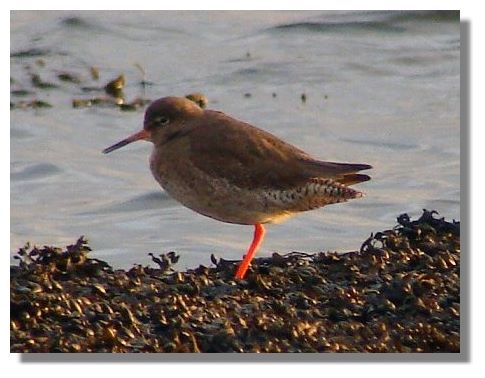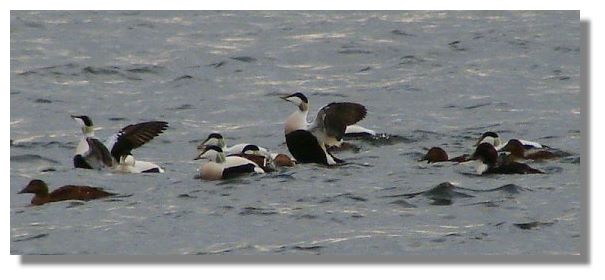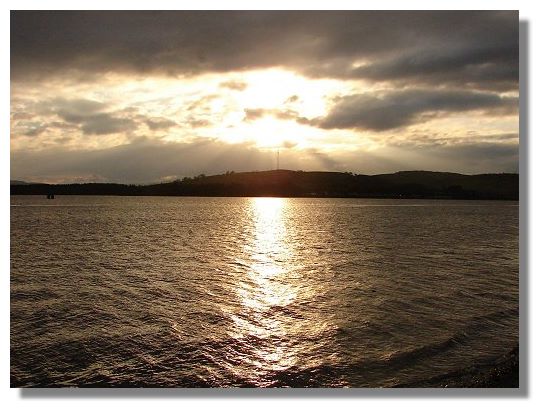Each week the Scottish Snippets Newsletter includes a number of photographs which illustrate the weather, flora and fauna of the current week around Scotland. There are so many such graphics worth including that a separate "colour supplement" is created so as not to totally overload the Newsletter. Here is this week's crop!
The rain which arrived in the early part of the week, started off as very light showers - smirr is the Scots word for that type of rain. The small raindrops clung to the petals of this striped purple crocus - creating an effect that professional photographers sometimes produce with a water spray!
The small size and unusual colouring of this goose at Drumpellier Country Park marked it out as different from the many Greylag geese that frequent the loch there. Reference to bird guides showed that it was a Pink-footed Goose - though some other types of geese have feet and legs that are just as pink! They do not normally frequent the west of Scotland, being more usually found in Fife, the Firths of Forth and Tay and the Moray Firth, where tens of thousands over-winter. Many will fly from the breeding grounds in Greenland to Iceland and then on to Scotland and England, arriving in October.
The solitary Pink-footed goose had obviously attracted the attention of this Greylag Goose, which was observed keeping close to the stranger - who looked a bit uncomfortable at the popularity. This photo is just asking to be entitled "Do you come here often" in the classic Glasgow dance-hall approach!
If the Pink-footed Goose was not showing off its feet, that could not be said about this handsome Redshank - though this one was standing on just one leg, as they often do. They are found all round the coasts of the British Isles, with around half of the birds wintering in Britain are from Iceland, though others breed in the British Isles too.
Eider Ducks are also found around the coasts of the British Isles, but being particularly wary of humans, they are usually only seen in remote locations. This flock, however, was paddling up the Firth of Clyde, off Helensburgh. Some of the brightly coloured adult male ducks are rising up out of the water - part of their mating display. Younger male birds take four years to develop those adult markings. Eiders dive to the seabed for food - mainly mussels and other shellfish.
This sun here is setting over the Rosneath Peninsula, across the Gare Loch from Helensburgh.
If you want to look back at earlier editions of this Colour Supplement, there is an Index Page
